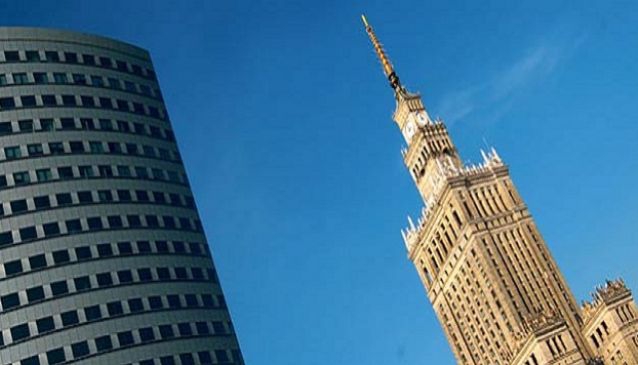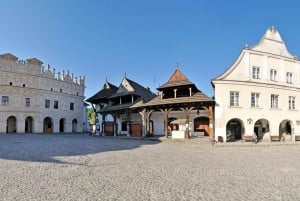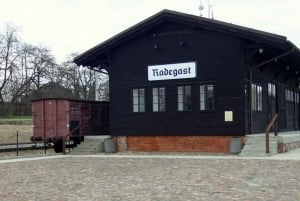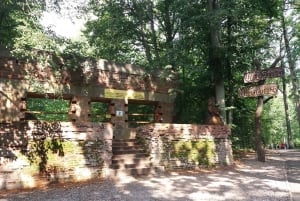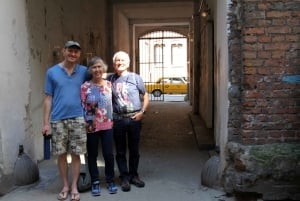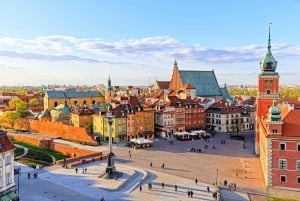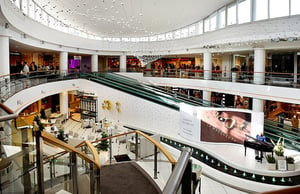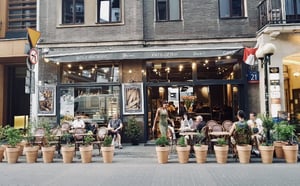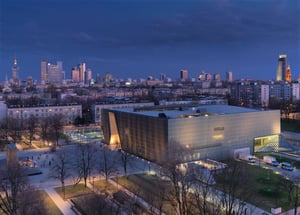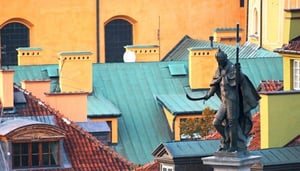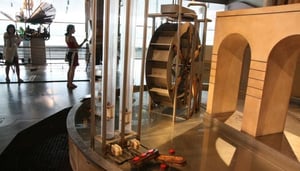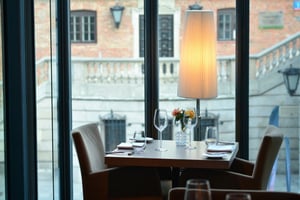The Indomitable Spirit of Re-Invention
... overflowing with classical palaces and other marvels of enlightenment-age construction
Book Top Experiences and Tours in Warsaw:
If youʻre booking your trip to Warsaw last minute, we have you covered. Below are some of the top tours and experiences!- From Warsaw: Kazimierz Dolny Day Tour with Lunch
- Warsaw: 2.5-Hour Dark Side - Praga District by a Retro Bus
- From Warsaw: Lodz & Litzmannstadt Jewish Ghetto Private Tour
- Warsaw: Live Chopin Piano Concert
- From Warsaw: Tour of the Wolf's Lair, Hitler's HQ by Car
There is nothing old in Warsaw that isn’t new, and nothing new that hasn’t already been around for ages past. It’s the city of contrasts and paradoxes, young, fresh, trendy and modern, and yet historic, preserving a heritage that reaches back to the renaissance. It is a city that has faced many trials and succumbed many times, but never failed to reinvent itself all over again.
Purists might bemoan the rampant changes in the Polish capital’s landscape. Whole neighbourhoods of the historic city were never rebuilt after the war, and the classic red-roofed skyline has been replaced by the jarring, disjointed forms of isolated tower blocks and now, in recent years, the blinding panels of skyscrapers. Most of old Warsaw has been consigned to paintings in the gallery of the Royal Castle , to postcards, to tablets scattered here and there describing what once stood in the place of today’s tram cables, parking lots, shopping centres and kebab kiosks. Fondly remembered in photographs, paintings, literature and song, it is most decidedly gone, and trampling boldly – albeit reverently – over the historic city’s skeletal remains is something wholly, incongruously new.
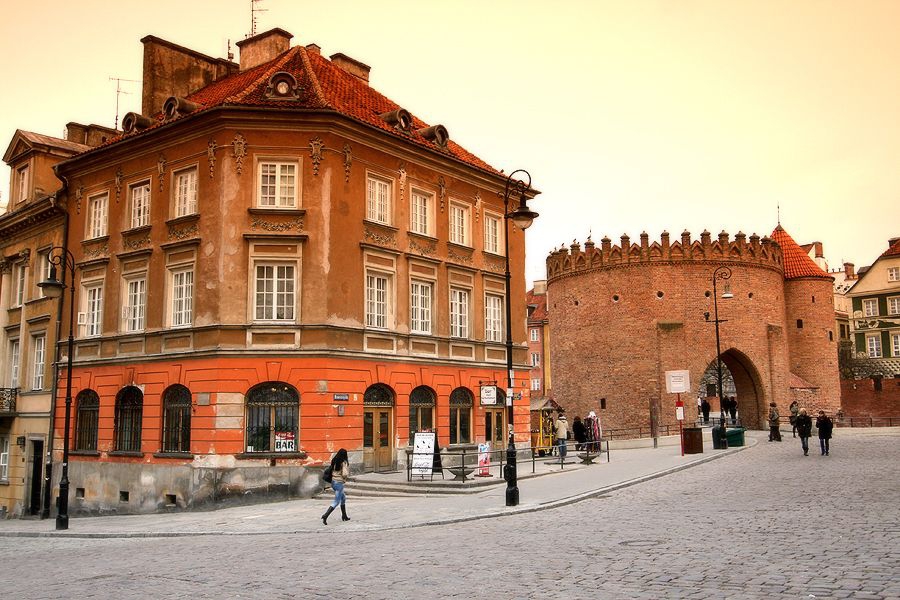
Warsawhas never been a stranger to innovation and re-invention. The first popular uprising the nation ever knew was held here in 1525, illustrating a spirit of independent thinking and a will to bring about change that was already going strong. About half a century later, Warsaw became the chosen location of the new, modern capital, which for centuries earlier had been located in the quaint, medieval .
The newest architectural and cultural trends from all over Europe were imported to Warsaw as it expanded from a small renaissance town to an elegant metropolis, overflowing with classical palaces and other marvels of enlightenment-age construction. Warsaw was a major centre of the political changes that took place in the wake of the American and French revolutions, espousing the spirit of freedom and equality, even after the fall of the kingdom and during the century of oppression that followed.
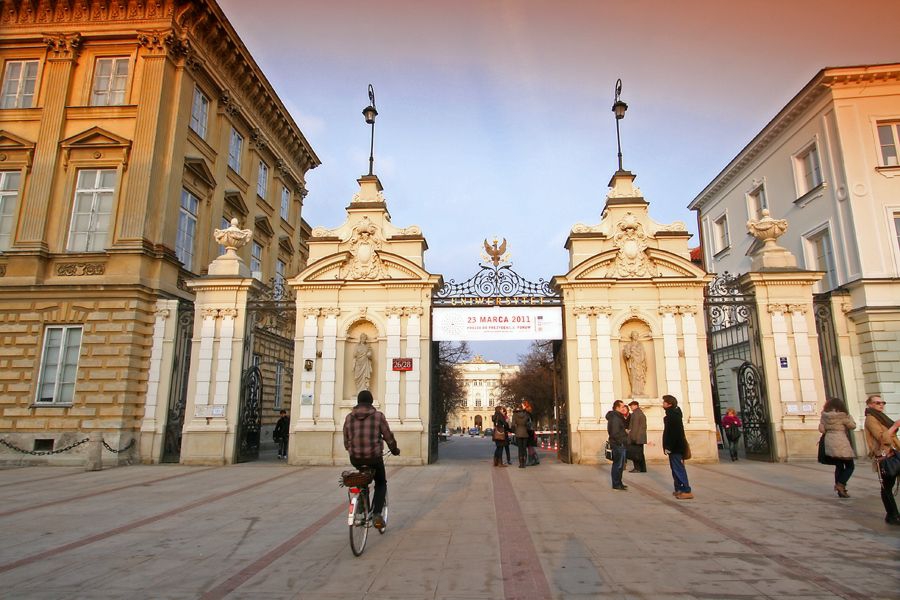
During the interwar decades, the capital of the newly independent nation reinvented itself once again, reuniting and modernizing with gusto, as always looking to the promise of a bright future. And when that bright future was cut short and the city was destroyed by German bombs, the city didn’t wait to catch its breath before it shoveled out the rubble and rebuilt once again, new beginnings always in sight.
This spirit of re-invention is visible all over the city today. Emblematic of a city that uses its own bits and pieces to begin anew is the University of Warsaw Library , pushed into the riverbank like a space-age hobbit hole, an elegant contraption of glass and metal whose semi-subterranean structure is aglow with natural light and blanketed with a public park. While monuments, plaques and stern busts of historic figures abound throughout the city, there’s no shortage of curious and daring modern installations, boldly punctuating the history-steeped landscape. The vast Vistula River, in many places still lapping up against unregulated grassy banks, is spanned by some marvels of modern bridgework, most notably the Swietokrzyski Bridge with its gatherings of spidery cables. The old, once decrepit and dangerous district of Praga is in the course of an explosive makeover, in which the run-down shells of former factories suddenly become trendy nightclubs, and old holes-in-the-wall turn into shrines of modern art.
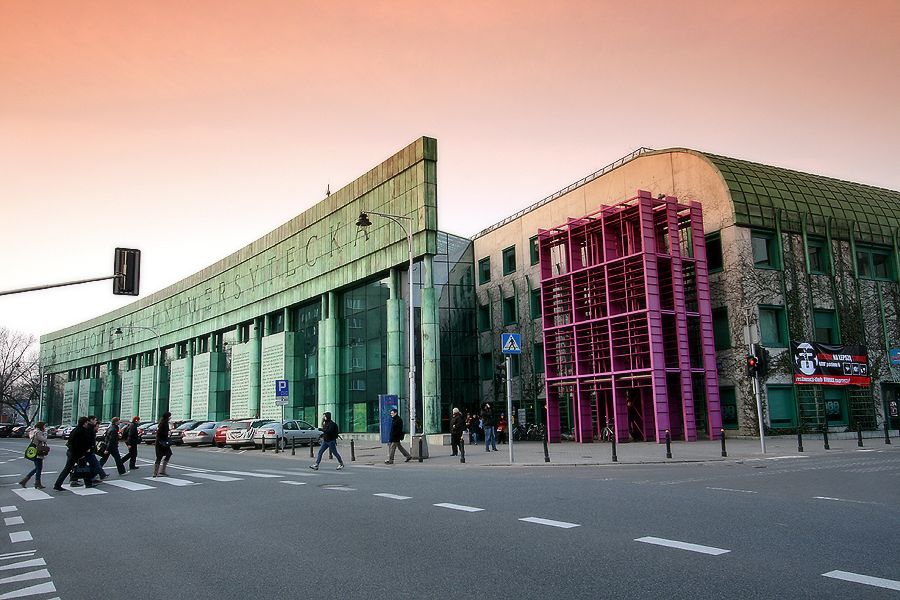
While the once-innovative architectural giants of the communist era that took over old Warsaw have long since become historical curiosities themselves, you don’t need to look far to find the next trends in city planning – shopping centres and office parks. Warsaw boasts several gigantesque shopping complexes, each virtually the size of a small city, packed with bogglingly endless selections of goods and crowds of hungry consumers. And fast transforming into the business capital of Europe, Warsaw’s building cranes never come down, with a new glass-and-steel project always in the works, and clean-cut, glistening, luxurious skyscraper complexes already cutting out a new skyline for the city.
History has its hallowed place in Poland’s capital, but this city is consciously, vocally, unmistakably new. Never to be weighed down by the once-was or the might-have-been, Warsaw has come into its own in recent years with an irresistible energy, ready to lead its nation into the future.


